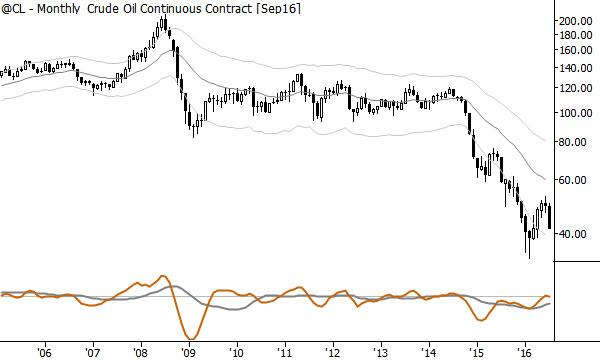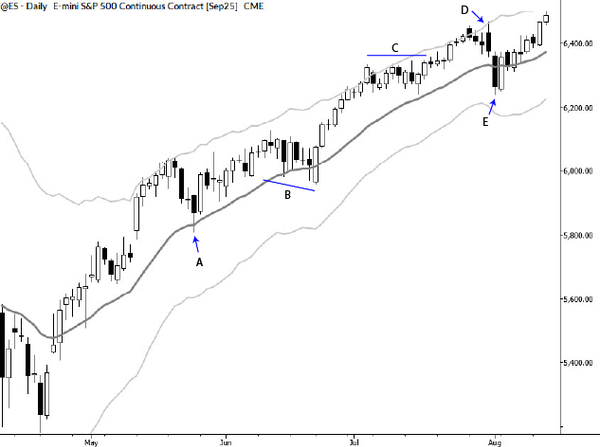Three steps to make sure you never miss that move
I've written a few posts recently about doing the right thing and the pain of missing moves. Sometimes very simple concepts can get us far, and I want to propose a simple solution to the problem of missing moves, and show you a way to fix this problem. Like most (over) simplified rules, we need to dig a bit deeper if you're going to do this. Focus on three steps:
- Know your system. There are many valid ways to trade and you can spend a lifetime chasing after the Holy Grail. It doesn't exist, so focus on finding something that works for you--for your psychological framework, your financial situation, your life situation (how much time can you devote to trading?)--find something that actually has an edge and use it. Be careful though, because most things that you find in books and online don't work as advertised, and most people lie about their results.
- Do the work. This will be different for different systems. If you're a daytrader, you need to be at the screen watching for your patterns. If you are a longer-term fundamental investor then you need to build some models and do some research. If you are a swing trader, then you need to review patterns and markets daily and update your entry points. A lot of people fall short on this step because it's hard to maintain the energy and focus. You might not think so, but after a series of losing trades, or in dull markets where nothing is happening, it's very easy to think "I'll do this tomorrow" or "one day doesn't matter." One day might not matter, or it might matter a lot, but it opens the door to a breakdown of discipline that can be fatal.
- Execute. When you get a signal, pull the trigger. Again, many people fail at this step. 2008-2009 must be one the shining examples; every stock system flashed buys, but most people ignored them. Why? Because they had recently suffered large portfolio losses and maybe just puked their positions out a few weeks ago, or perhaps they were skeptical of a financial system about to collapse and the folly of central bank intervention. If, and only if, that type of information is part of your process can you use it, but this is rarely true. Rather, political speculation and fear is just an excuse to ignore what you know needs to be done. Don't fall into this trap! When you get a signal, execute. If you've done step #1, then that's the path to profits. (If your system sucks, go back to step 1.)
At the risk of oversimplifying, I think these are important bullet points. Once you're sure you have a good system (and, again, I would ask how you know it works... and warn that your answer to that question is probably not good enough), it really comes down to do the work and execute. Repeat.
Let me show you some examples from recent market action. I have no idea how these trades will resolve, but these are trades that are happening right now. The way I trade, I often focus on finding pullbacks, either in established trends or after potential trend changes. I "stalk" these pullbacks for entries, looking to enter on momentum in the expected direction of the trade. Every day, I must review all the markets I follow and update entry points. (I publish a lot of this work in the research I write daily. (Edit: my work is now available at Talon Advisors.)) Even a day or two can make a difference as chasing a trade is usually a bad idea.
This takes vigilance and focus, especially for monthly flags like this crude oil pattern that has been unfolding for about six months. Do you have the focus to stalk a trade daily for more than a hundred days, entering when triggered, maybe taking a small loss here and there, and then continuing to track the potential entry if it is still valid? For me, for swing trading, this type of focus is an essential skill, but it really boils down to three things: know your system. Do the work. Execute.






